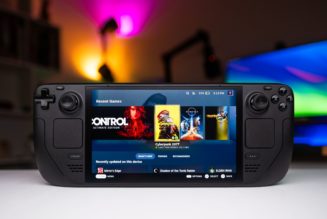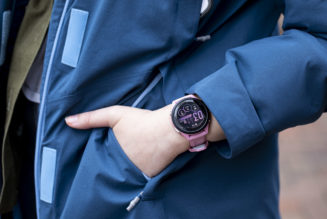First teased last October, the devices made an in-person appearance at Mobile World Congress 2023. But it’s clear they’re still far from ready for a public release.
Share this story

The last time I was at Mobile World Congress in Barcelona in 2019, foldables were the new hotness in town. Samsung had announced — but not released — its first Galaxy Fold, and Huawei showed off a foldable of its own at the show — the Mate X. Four years and one pandemic later, and Lenovo is back at the same show to make a pitch for a subtly different kind of future, one where laptop and smartphone screens alike can gradually expand to offer more screen real-estate, rather than needing to be completely unfolded like books.
I was treated to a first-hand look at both devices, which were first teased by the company last October. There’s a rollable laptop, and a rollable smartphone which Lenovo is currently branding as a Motorola device (Lenovo acquired the phone brand almost a decade ago in 2014). But Lenovo is emphasizing that both are early proof of concept devices, and representatives wouldn’t answer any of my questions about when they might be released to the public, or how much they might cost when they do. I didn’t even get a chance to hold the devices for myself.
But both of them offer an interesting glimpse at how transforming screens might influence the future of phones and laptops alike, and highlight the kinds of functionality that might be possible once you leave behind the idea of a screen as an immovable flat object.




Before we get into the concept laptop’s signature feature, it’s worth pointing out just how unassuming the device looks before its screen unrolls. Lenovo had the device sitting alongside its other laptops in a conference suite, and not a single one of the dozen-or-so journalists in attendance clocked that it was anything other than a standard ThinkPad. In its unextended form, it’s got a regular looking 12.7-inch display with a 4:3 aspect ratio.
That all changes with a flip of a small switch on the right of the chassis, at which point you can hear some motors whirring and the screen extends upwards. That switch causes a couple of motors in the laptop to spring into action, pulling the screen out from underneath the laptop’s keyboard to hoist it up more or less vertically in front of you. It’s an admittedly slow process on this concept device (from our footage it seems to take a little over ten seconds to fully extend) but eventually you’re left with an almost square 15.3-inch display with an 8:9 aspect ratio.
The device brings to mind LG’s fancy (and eye-wateringly expensive) rollable TV that’s designed to roll away when you’re not using it. Only in Lenovo’s case the screen is rolling down into the laptop’s keyboard rather than a small box, and it also can’t roll away entirely. Once fully extended, Lenovo’s laptop screen has a small crease where its screen originally bent underneath the keyboard. But again — it’s a prototype.
In terms of resolution the display is 2024 x 1604 when it’s in small mode, and 2024 x 2368 when fully extended. So, in theory at least, pretty usable without having to fully extend the display. The screen is supplied by Sharp, which is also the company Lenovo’s worked with on its ThinkPad X1 foldable laptops. Display competitor Samsung Display has also announced its working on rollable laptop displays with Intel, but its prototype didn’t appear to have a keyboard attached.

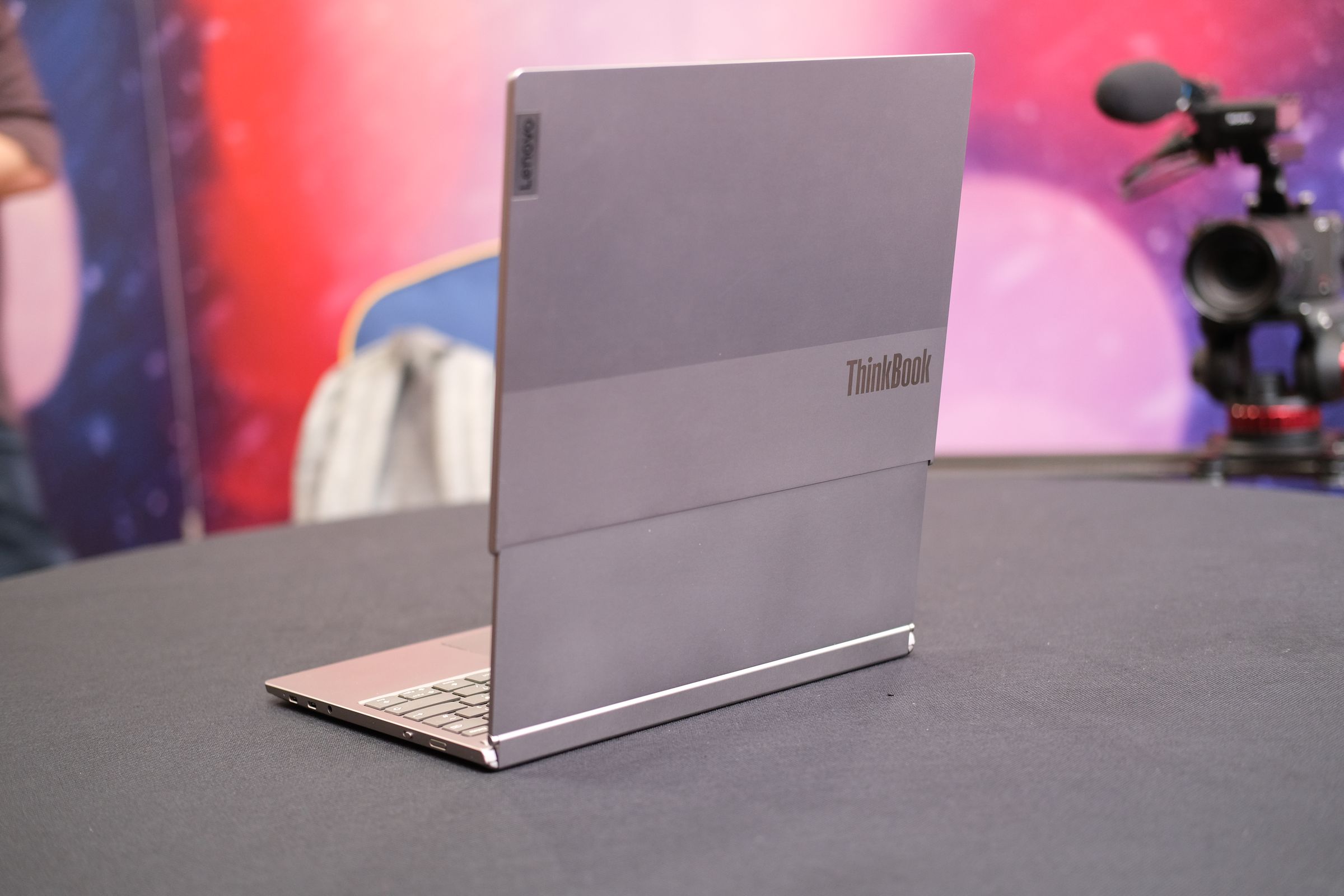
When fully unrolled, Lenovo’s rollable laptop has a weirdly tall display with an 8:9 aspect ratio, which the company points out is like having two 16:9 displays on top of one another. It’s not dissimilar to the dual-screen Yoga Book 9i we tried out at CES and which is due to release in June. It’s a form-factor that could be useful to anyone who struggles to work on a single small laptop display and has considered buying an external display (or, indeed, iPad) to work as a portable second monitor.
Lenovo thinks such a tall display could be helpful for both office workers and creative professionals alike, offering everything from more lines of code, to more cells in a spreadsheet, or — for me personally — being able to write on the bottom half of the display while keeping notes and sources visible in the top half. Plenty of people like to use vertical monitors with their desktop PCs, and Windows has no problem stacking windows above and below one another.



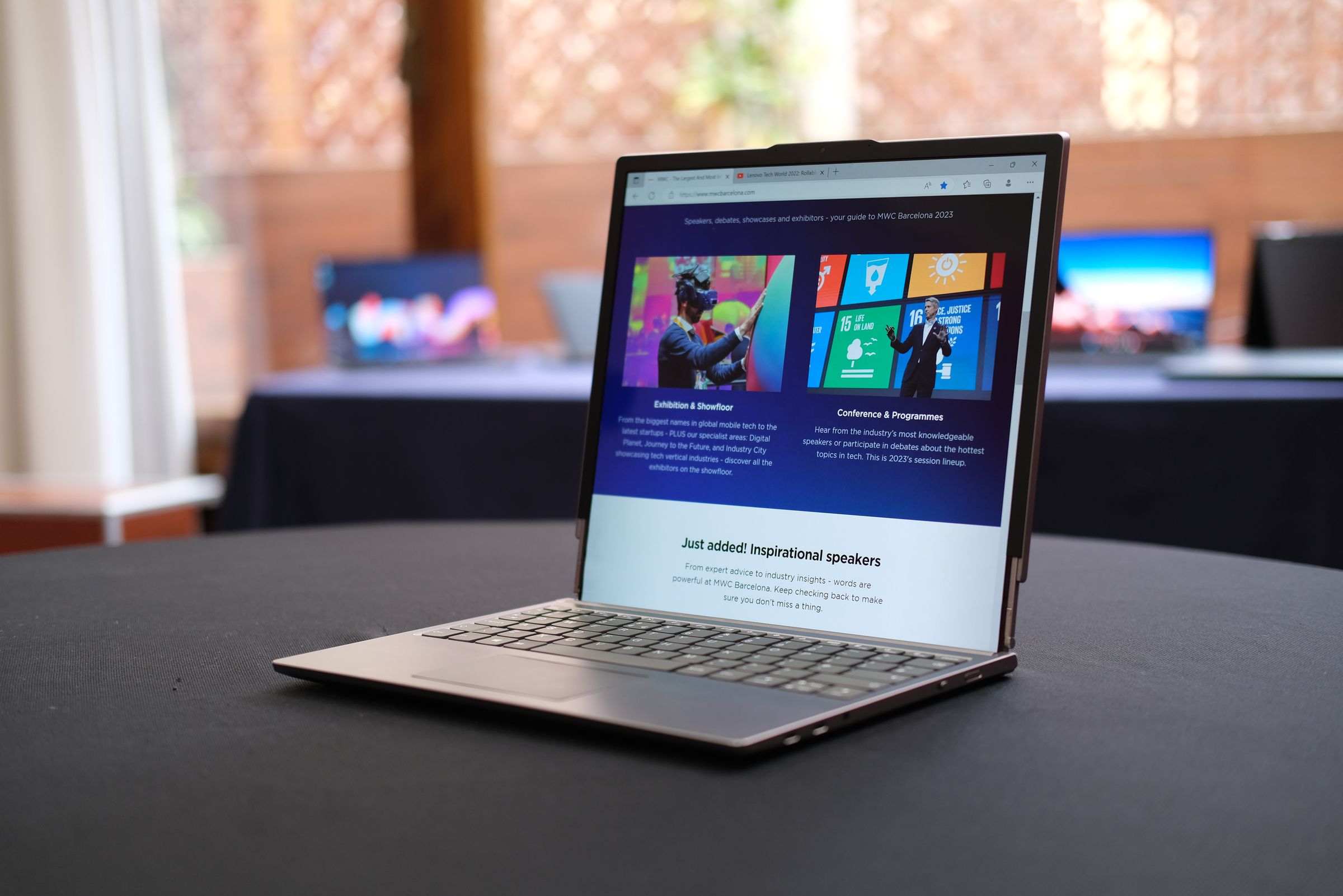
Despite how polished the device looked in our demo, Lenovo is clearly nowhere near ready to release its rollable concept as a consumer-ready device. I asked about durability, and Lenovo would only say that it’s aiming to get to 20,000 to 30,000 rolls, the same ballpark as its foldable ThinkPad X1 (I admit this doesn’t sound like much compared to the hundreds of thousands of folds that foldable smartphones tend to be rated for, but I guess you unfold and fold a laptop less regularly throughout a working day). The company was not forthcoming about how many rolls the prototype can currently survive.
I also had questions about weight and battery life. Lenovo wouldn’t tell me how much the laptop weighs, and I wasn’t allowed to pick it up myself (trust me, I asked). Ideally you’d want this thing to be both lighter than carrying around a laptop plus a portable monitor, as well as being more compact, but we’ll have to wait and see on the former point. And apparently the rollable laptop’s unrolling mechanism draws a couple of watts of power while in motion, which doesn’t sound ideal at a time when many laptops’ batteries can still struggle to make it through a day’s use.
That said, Lenovo is one of the few laptop manufacturers to have actually released a foldable laptop, which gives me some confidence that its rollable concept might one day become a reality. Its original ThinkPad X1 Fold came out in 2020, and a second-generation model was announced last year — though it’s yet to make it to market after having missed its November ship date.


Lenovo’s other rollable device it’s demoing at MWC is a Motorola smartphone. We’ve seen numerous companies including Samsung Display, Oppo, TCL, and even LG (RIP) show off rollable concept devices in various stages of development over the years, but we’re yet to see the technology break through in a consumer device.
Like a foldable, the idea is that a rollable smartphone can be small when you need it to be portable, and big when you need more screen to get the job at hand done. Lenovo’s phone — which it’s calling the Motorola rollable smartphone concept — is all about taking a small square of a display and making it longer. It’s almost like a foldable flip phone, but without a secondary cover display because it’s the same screen the entire time.
When all neatly rolled up, Lenovo’s Motorola rollable offers a 5-inch display with a 15:9 aspect ratio. Then, with a small double tap of a side button, the screen unfurls to give you a remarkably tall 6.5-inch display with a 22:9 aspect ratio.

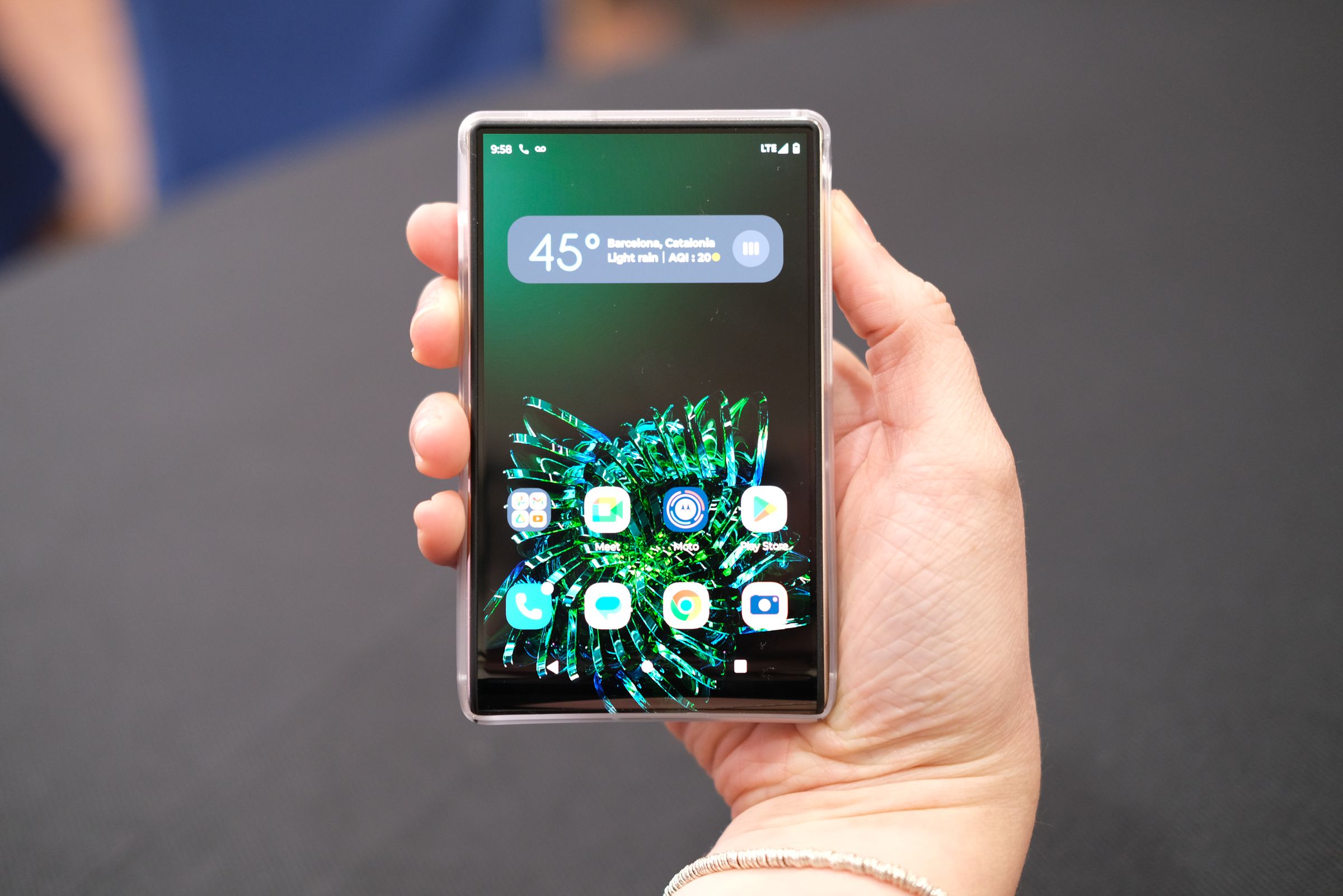

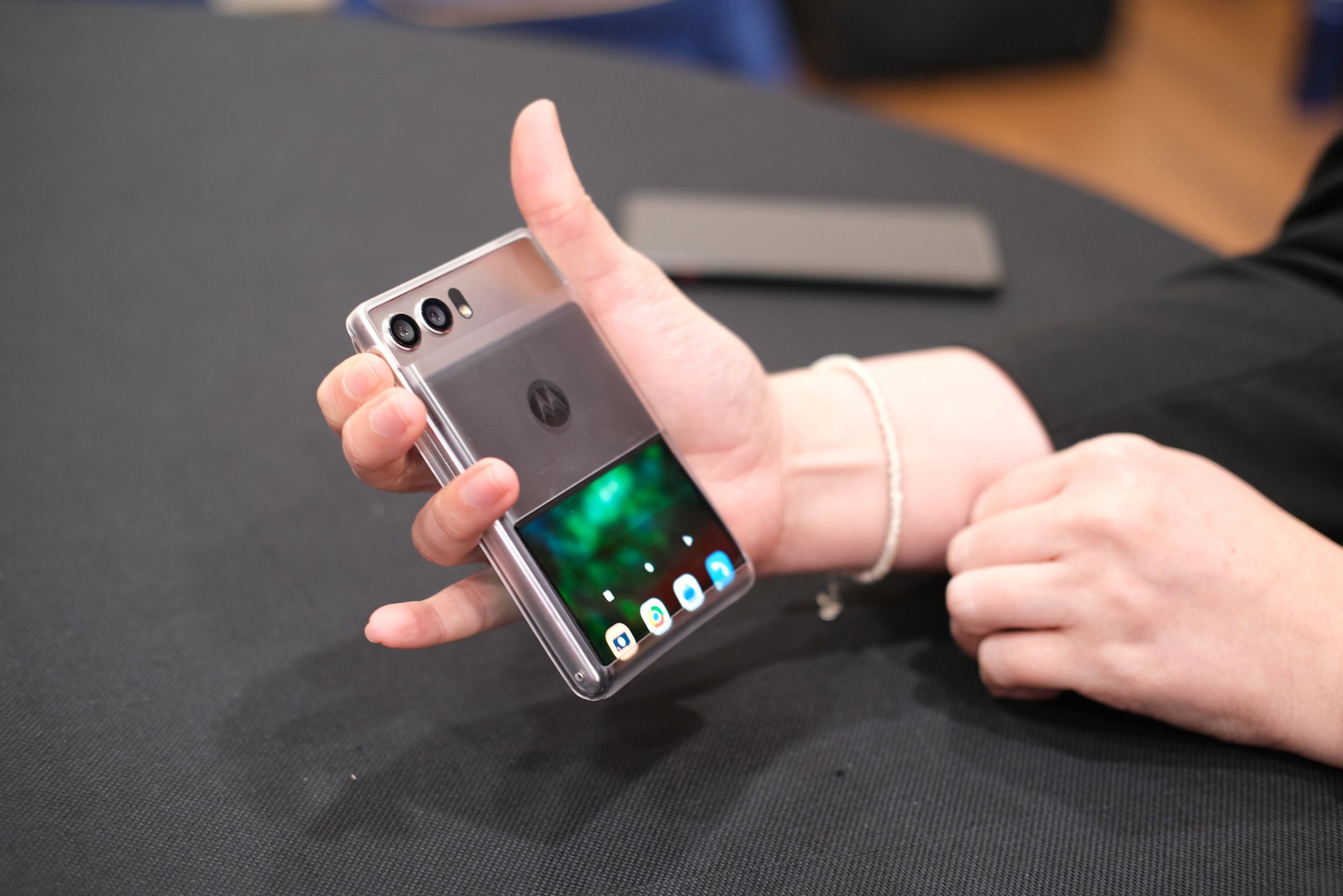
Lenovo gets a lot of mileage out of this simple-seeming design. There’s the obvious use cases, like being able to watch a video at its native aspect ratio with no black bars, or getting a larger screen when you want to write an email. Lenovo’s idea is that the phone will automatically adjust its screen to better suit different apps, and it hopes the final version will let users customize how big they want the screen to be for each use case.
There are also some less obvious elements of the device. Because the rollable screen is rolling around the bottom of the phone rather than disappearing inside its chassis, you’re left with a small secondary display on its back when it’s rolled up. Software features for this include using it as a viewfinder when you’re taking selfies with the phone’s rear cameras. Lenovo has even included a feature where the rear display plays cute eye-catching animations to get a child to look at the phone when you want to take a photo of them. That said, if the cover display on foldable flip phones from the likes of Samsung and Oppo are anything to go by, finding genuinely useful things for diminutive screens like this to do can be a challenge.
Another cool touch is that the display can hide the selfie camera and earpiece, and rolls down to reveal them when you make a phone call or go to take a selfie.
Like with the laptop, the Motorola rollable smartphone concept is a proof of concept, and there were a lot of questions Lenovo didn’t have answers to, like how many rolls the screen can survive. There’s no wording on price, and not even a hint on when this device could release. I wasn’t given the opportunity to hold or use the device for myself.
But again, given Lenovo’s track record with foldable phones (remember the Razr?), I think there’s a non-zero chance of this tech appearing in a Motorola-branded phone some day.

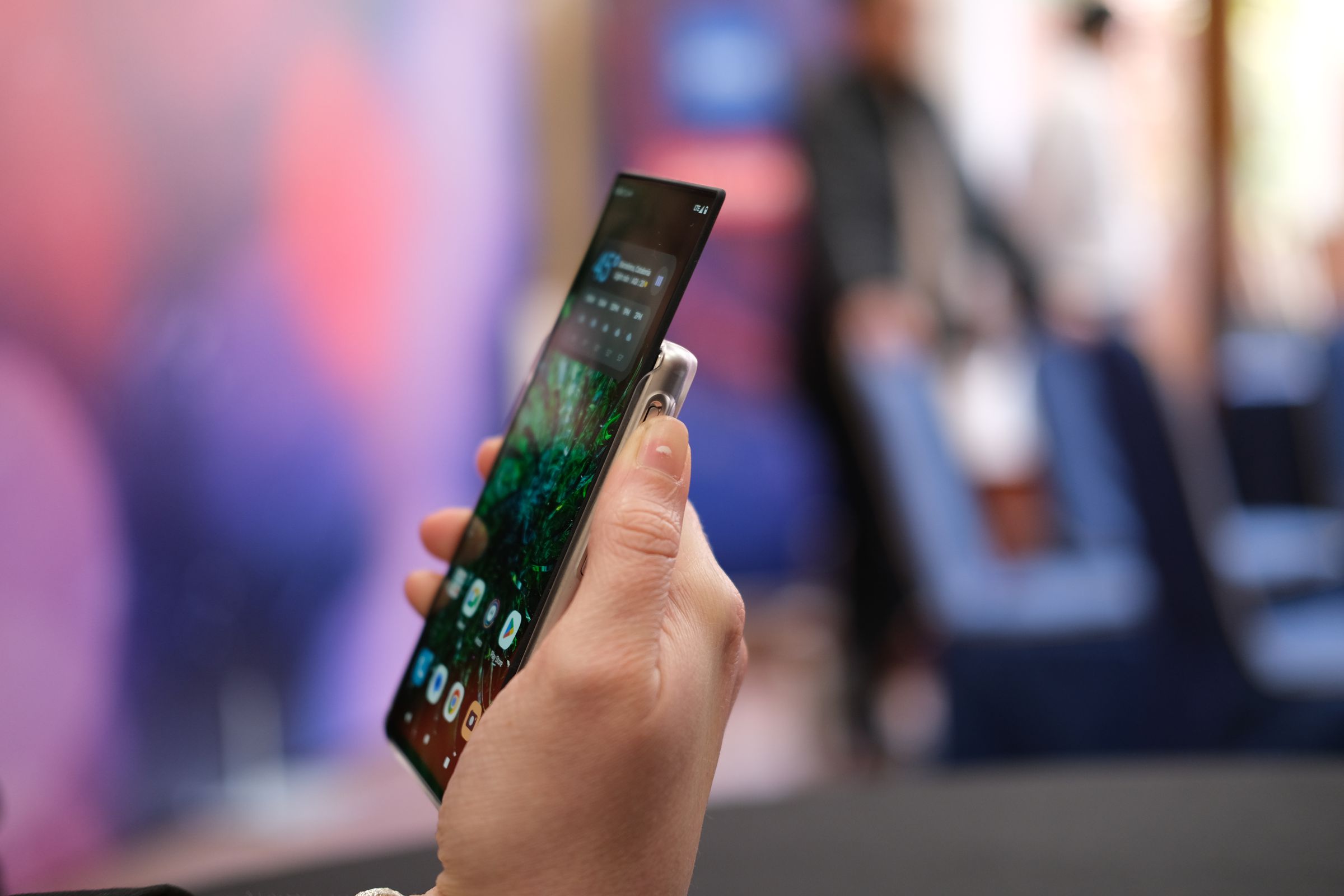
In 2019, it seemed like foldable phones were about to become the next big thing in the world of smartphones. But four years later, it feels like we’re still waiting for this future to become a mainstream reality. Lenovo would be the first to admit that its rollable concept devices are far from ready for prime time, but they offer a compelling argument for an alternative, rollable future.
Photography by Jon Porter / The Verge




